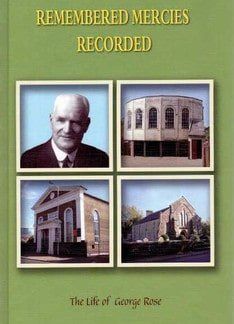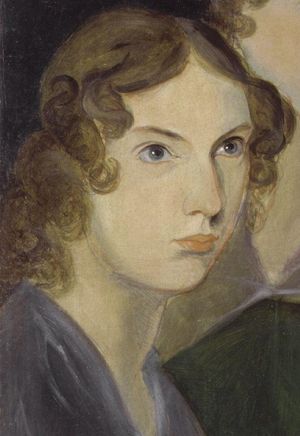‘Turn your eyes upon Jesus’
God delights in the triumph of the small and insignificant. Agur the son of Jakeh talks about ‘four things which are little upon earth, but they are exceeding wise’ (Proverbs 30:24).
Paul tells the Corinthians that ‘God hath chosen the foolish things of the world to confound the wise; and … the weak things of the world to confound the things which are mighty’ (1 Corinthians 1:27).
The Holy Scriptures teem with examples of the microscopic being made mighty, the hated being loved, and the despised and rejected being received at last with great honour and renown.
Eternity alone will reveal the results of many such examples. But a few have been made known in the here and now, the following providing us with an excellent sample.
Lilias Trotter
Our story begins with a lady by the name of Lilias Trotter. Born in London in 1853, Lilias would grow up to be a well-favoured, charming and gifted young lady.
John Ruskin, the well-known art critic and man of letters, first met her in Venice in 1876. Typical for his times, Ruskin held a very dim view of women’s abilities in the creative sphere, but he was stunned by her artistic powers.
One day he took her sketching round the ancient city, and declared that ‘she seemed to learn everything the instant she was shown it’. He later believed that if she would devote her life to art, ‘She would be the greatest living painter and do things that would be immortal!’
Ruskin’s unwitting words about ‘things immortal’ would be fulfilled in a way which could never have entered into his head!
Believers are obliged to remember Ruskin with sadness. There was a time when he was a close friend of C. H. Spurgeon and sat under his ministry at the Metropolitan Tabernacle, but, like Demas, the love of this present world meant too much to him.
Lilias Trotter would remain a life-long friend of Ruskin, but like Ruth and Orpah, their paths would decisively part. Lilias, a devoted Christian, would go on to become a pioneer missionary to the Sufi Muslims in Algeria.
Sufi Muslims have ever been impressed by the ‘beautiful’ and ‘mystical’ elements in religion. Lilias felt that her life-long calling involved the smuggling of the sublimities of Christian truth into their minds, almost by stealth, and with long patience capturing their hearts and leading them to Christ.
She wrote a number of books lavishly illustrated with exquisite art work; books with such telling titles as The way of the sevenfold secret.
There is, of course, the ever present danger of syncretism in this approach to other religions. Nevertheless, Lilias Trotter did a good work, and her missionary endeavours in Algiers would in years to come be incorporated into what is now called Arab World Ministries (AWM).
Dandelion
Ruskin’s lovely but (spiritually speaking) lethal dreams meant that he had drifted away from that early light upon his path. Lilias was doubtless aware of this danger, when she said how ‘easy’ it is ‘to live in half a dozen good, harmless worlds at once’, but be ‘drifting about’, without aim and meaning and focus in our lives.
During World War I she wrote a tract entitled Focussed: a story and a song. It began with the most extraordinary illustration: ‘It was in a little wood in early morning. The sun was climbing behind a steep cliff in the east, and its light was flooding nearer and nearer and then making pools among the trees.
‘Suddenly, from a dark corner of purple brown stems and tawny moss, there shone out a great golden star. It was just a dandelion and half-withered … but it was full face to the sun, and had caught into its heart all the glory it could hold, and was shining so radiantly that the dew which lay on it still made a perfect aureole round its head. And it seemed to talk, standing there … to talk about the possibility of making the very best of our lives’.
Bringing the illustration further to bear, she says, ‘It is easy to find out whether our lives are focussed, and if so, where the focus lies. Where do our thoughts settle when consciousness comes back in the morning? Where do they swing back when the pressure is off during the day? Dare to have it out with God … and ask him to show you whether or not all is focussed on Christ and his glory’.
Helen Lemmel
Another lady, Helen Lemmel, born in England in 1863, and daughter of a Methodist minister, spent most of her long life in Seattle, USA. There she would flourish as a prolific hymn writer, singer and musician.
For all her achievements, she is best remembered throughout the world for just one hymn, the opening line of which runs, ‘O soul are you weary and troubled…?’ And the hymn is best known for its refrain, ‘Turn your eyes upon Jesus, Look full in his wonderful face…’
One day in 1918, a missionary friend had handed Helen Lemmel, Lilias Trotter’s tract (referred to above) with its great lesson on the dandelion, and her eyes fell on these words: ‘So then, turn your eyes upon him, look full into his face and you will find that the things of earth will acquire a strange new dimness’.
Such was the impression these words made that she promptly sat down and wrote the hymn we have today. The words just flowed off her pen. It was one of those rare compositions which just ‘writes itself’.
It was published the same year, but its first recorded popular, public reception was at the Keswick Convention of 1922. That was a noteworthy year in Britain and Ireland. Various parts of the realm were experiencing powerful movements of the Holy Spirit of God. Lowestoft and the eastern seaboard of East Anglia witnessed the ministry of Douglas Brown, which in turn fed into a movement in north eastern Scotland.
This, yet again, led to an even greater work in Ulster, with men such as Jock Troup and William Nicholson. In the Isle of Skye a cautious and discriminating Kenneth Macrae was also acknowledging a great and mighty work of God amongst the scattered congregations under his care.
‘Flower of the field’
This hymn would become an iconic expression of the devotion and spiritual fervour found at Keswick in those days! We must regrettably demur from some of the tenets of the Keswick Movement — notably its Amyraldianism and some aspects of its holiness teaching.
By and large, evangelicalism in England had lost the full-bodied experimental Calvinism of its forefathers. Nevertheless this hymn was blessed to many, and its tones are a poignant reminder of praise in the 1920s.
Let us reflect on how a half-withered weed in an Algerian wood led to such amazing results. An aged relative of the present writer, having travelled the globe, once remarked, complaining about the problems encountered on his lawn, ‘If there’s one thing that grows everywhere, wanted or unwanted, it’s the common or garden dandelion!’
On one occasion our glorious Lord Jesus compared himself with the common, despised, downtrodden and frequently overlooked flower of the field. ‘Even Solomon in all his glory was not arrayed like one of these’, and ‘Behold, a greater than Solomon is here’ (Matthew 6:29; 12:42b; cf. Song of Solomon 2:1).
The present writer’s mother kept a spiritual journal for some time during her later life. Her final entries became more frequent, though less wordy, in her last days. The last entry, probably the last thing she wrote, with a weary pen trailing off the page, runs:
Turn your eyes upon Jesus.
Look full in his wonderful face,
And the things of earth will grow strangely
dim
In the light of his glory and grace.
This article first appeared in
Gospel Advocate, the journal of
Gospel Advocate Relief Fund (GARF)













